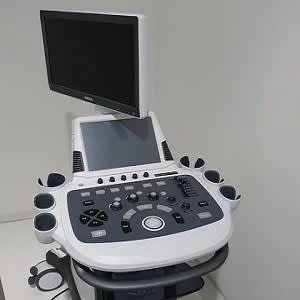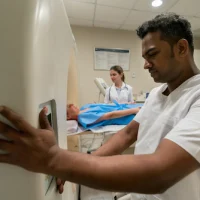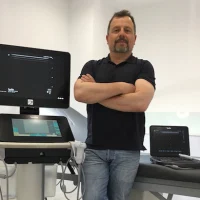Contrast-enhanced ultrasound (CEUS) offers a new, safe, radiation-free modality to help problem-solve diagnostic questions in a wide range of clinical applications, adding to the radiology armamentarium, according to an article published by researchers from the Department of Radiology and Biomedical Imaging at University of California San Francisco.
Ultrasound contrast agents have been in use throughout most of the world and have been used off-label in the United State for over a decade. In addition to the use of ultrasound contrast agents in cardiac imaging, the FDA recently approved their use in liver imaging for both paediatric and adult patients, and for use in the urinary tract (voiding ultrasonography) in paediatric patients for evaluation of suspected or known vesicoureteral reflux (VUR).
The recent FDA approvals are likely to spur wider adoption of CEUS, says the article, which details the modality's key advantages. Since the contrast agents are excreted by the lungs they are safe in patients with renal and/or liver dysfunction whom otherwise may not be able to undergo a contrast-enhanced evaluation. Also, CEUS provides unique advantages and can improve visualisation of blood flow and tissue vascularity.
"A specific advantage of CEUS is the ability to perform 'real-time' assessment of vascularity. With the use of dedicated ultrasound software that suppresses the normal background tissue, CEUS reflects the true enhancement pattern of an organ or lesion. Unique information about the microvasculature and assessment of true washin and washout of enhancement can be acquired with high temporal resolution," the article explains.
CEUS utilises a narrow ultrasound beam, allowing it to achieve higher in-plane spatial resolution compared with other imaging modalities, to better resolve and characterise small structures. For example, CEUS can demonstrate subtle flow in septations and/or small mural nodules in renal masses that may not be visible with CT or MRI and more definitely differentiate solid from cystic masses.
The limited half-life of the CEUS agents of approximately 10 minutes provides intravascular circulation time long enough to acquire images, but with subsequent rapid excretion via the lungs. This timing, the article says, allows for multiple contrast injections in a single imaging session, useful in assessing enhancement at different anatomic locations or during different phases. Other benefits of CEUS include its portability, lack of ionising radiation exposure, and lower cost than other imaging modalities.
In addition to FDA approved indications, these contrast agents are frequently used off-label to assess for the presence and dynamics of blood flow in tumours, particularly in the kidney, in order to differentiate benign cystic lesions from solid masses.
The article also provides practical details and useful information on how to establish a CEUS service safely and efficiently. Contrast specific software is required and most major modern ultrasound units now have contrast software upgrades available that can be purchased and installed by the manufacturers on a range of transducer frequencies and designs. This software implements several features that facilitate ease of use of CEUS.
"It is important when starting to use CEUS to become familiar with the safety profile of the contrast agents. Approval by the local hospital institutional safety committee and/or Pharmacy and Therapeutics committees will be needed to get the contrast agents approved for Formulary use," the article points out.
Setting up a CEUS service also requires re-evaluating resources and staffing needs.
"You will want to include the administrative staff, including the sonographers and nurses, to discuss how best to streamline scheduling of exams. Workflow efficiency should be considered, including whether the exams are best performed in an inpatient or outpatient setting. A designated radiologist should be identified to decide which patients would benefit from a CEUS study," the article explains.
Hands-on training or visiting a site with experience in CEUS can be especially useful prior to implementing into a clinical service, the article adds.
Source: Abdominal Radiology
Image Credit: Pixabay
References:
Weinstein S et al. (2018) How to set up a contrast-enhanced ultrasound service. Abdom Radiol April 2018. 43:808. https://doi.org/10.1007/s00261-017-1278-1
Latest Articles
Imaging, contrast agents, CEUS, Contrast-enhanced ultrasound
Contrast-enhanced ultrasound (CEUS) offers a new, safe, radiation-free modality to help problem-solve diagnostic questions in a wide range of clinical applications, adding to the radiology armamentarium, according to an article published by researchers fr










